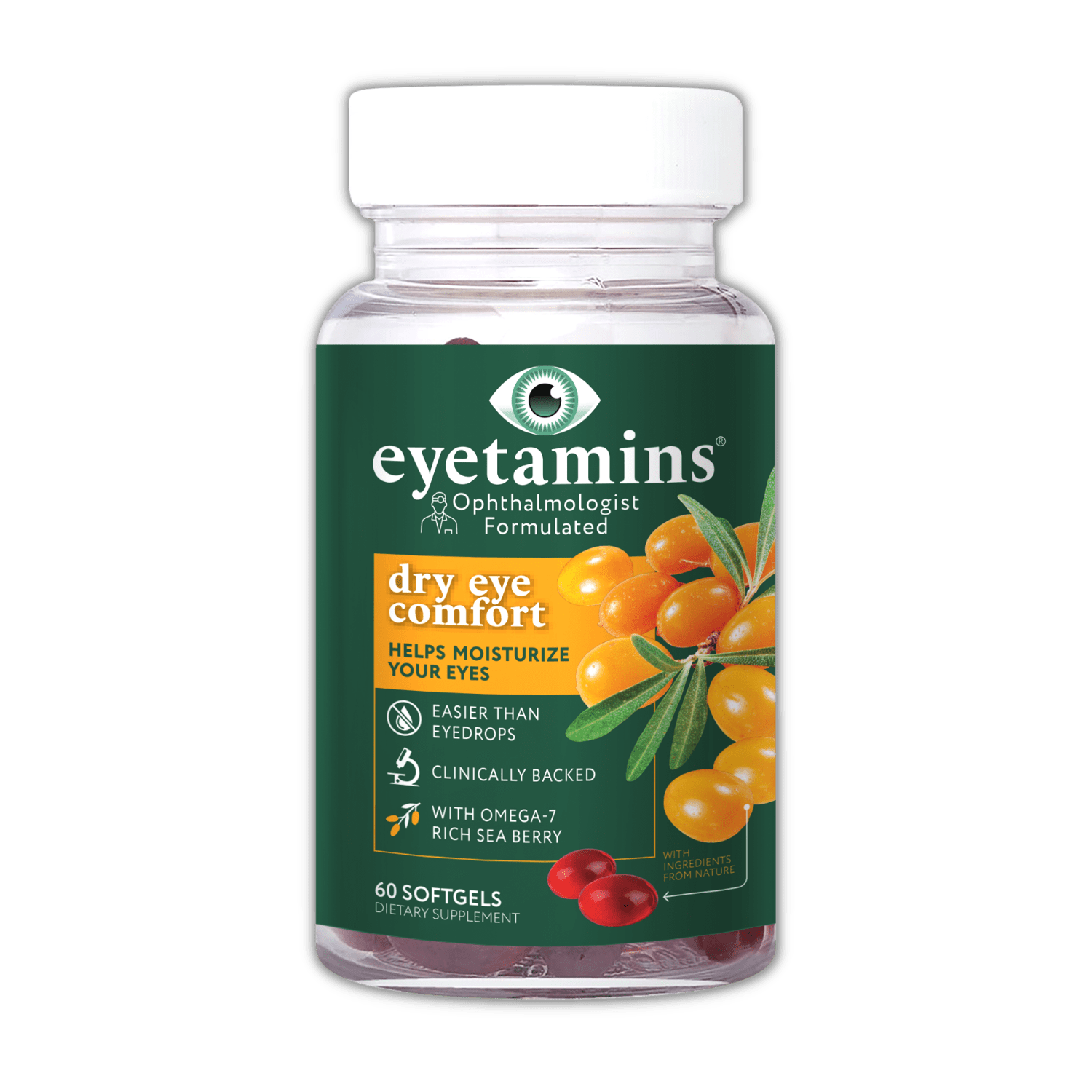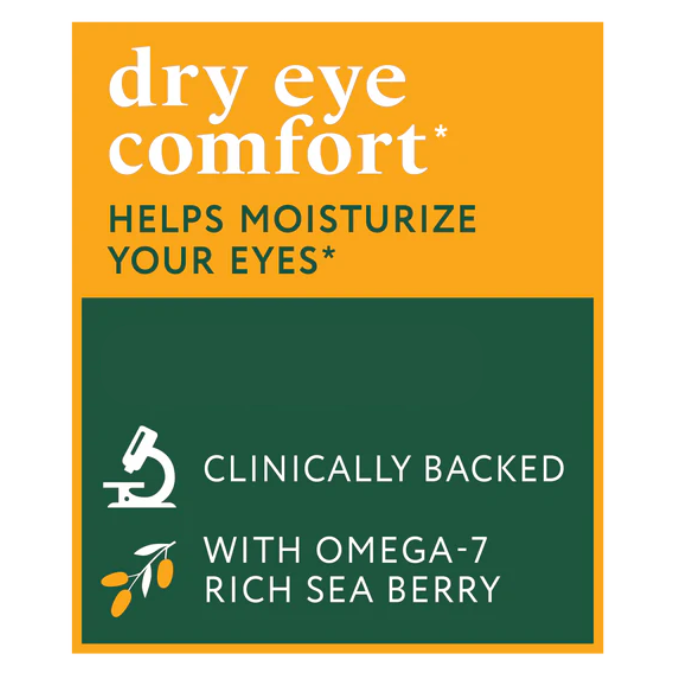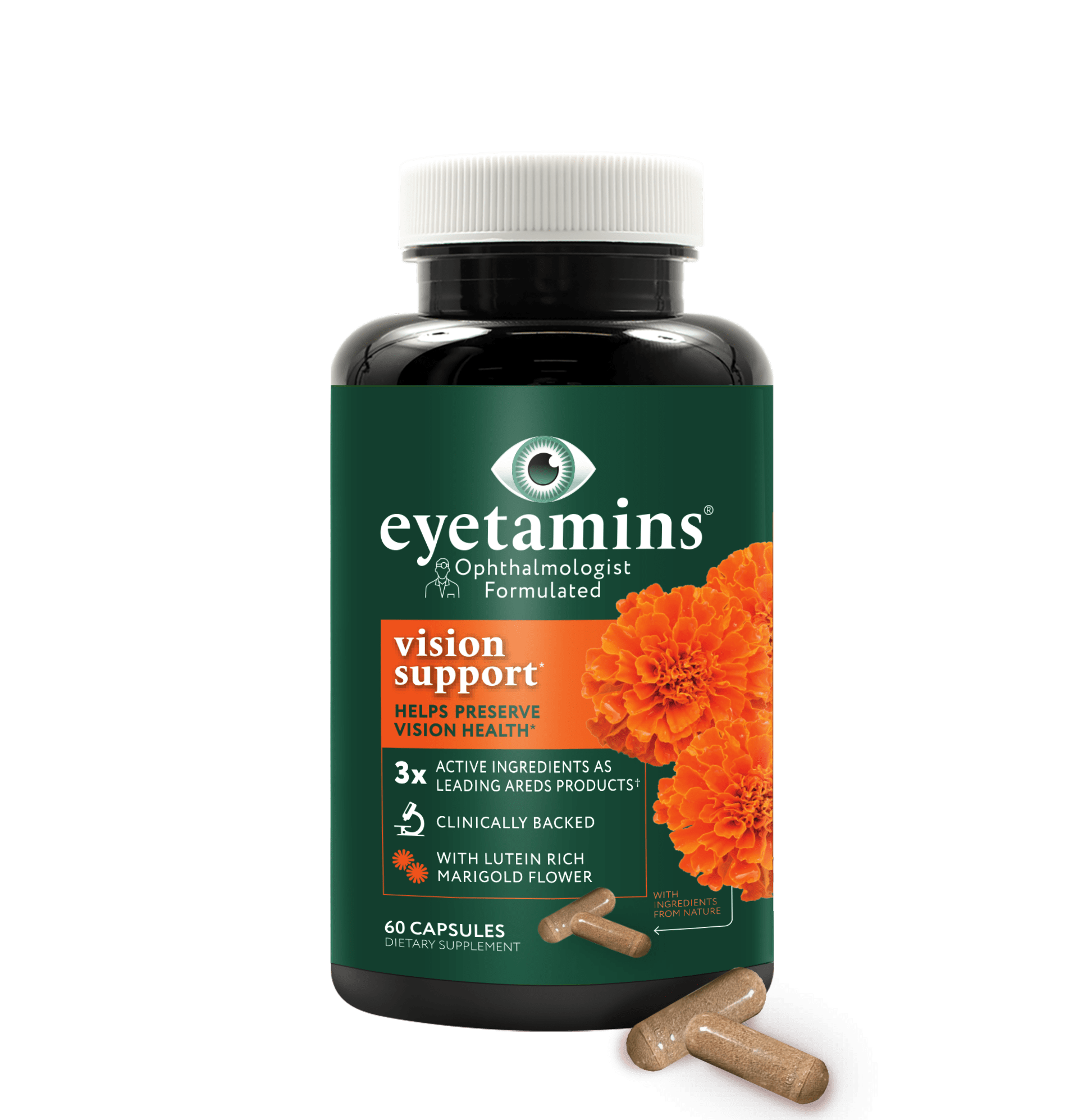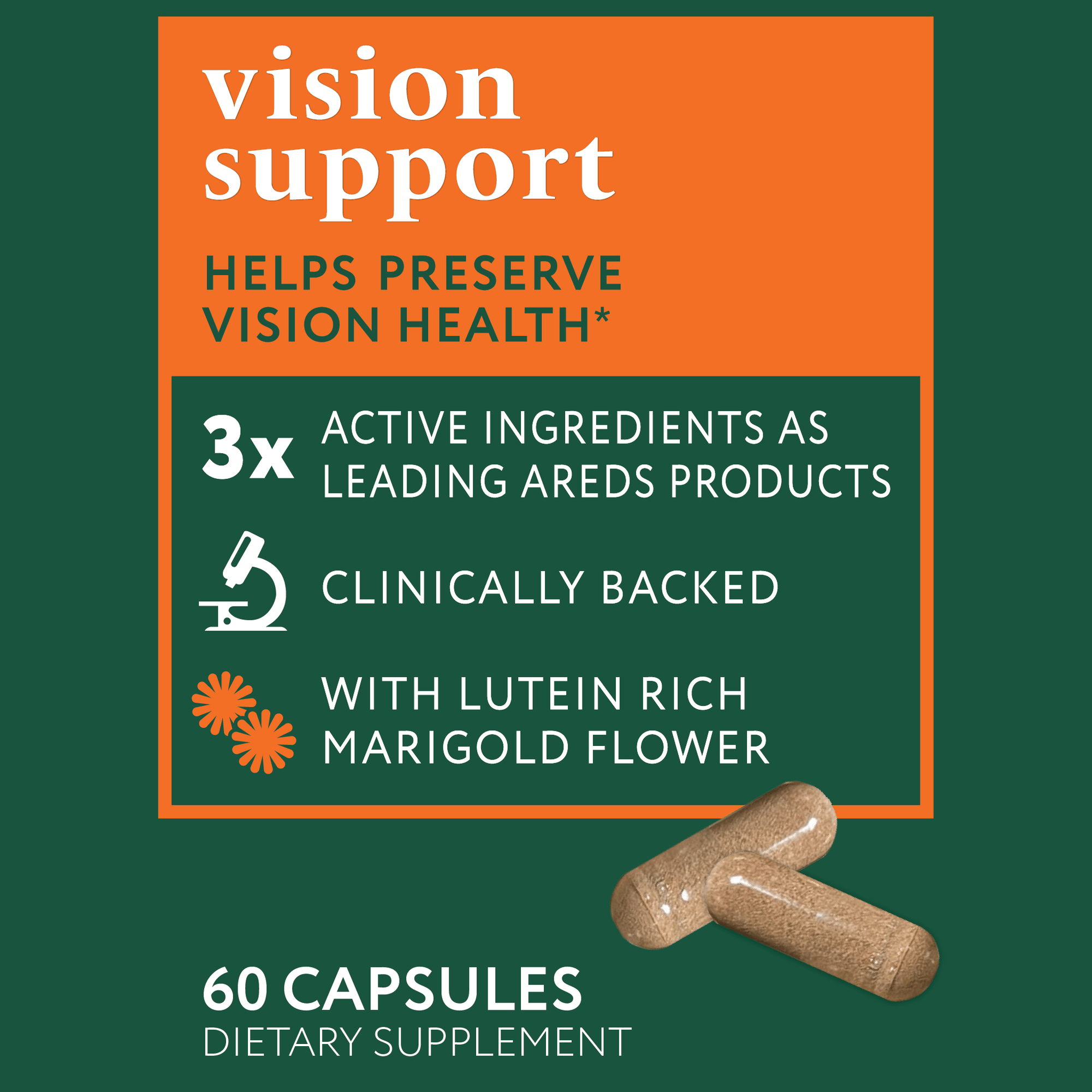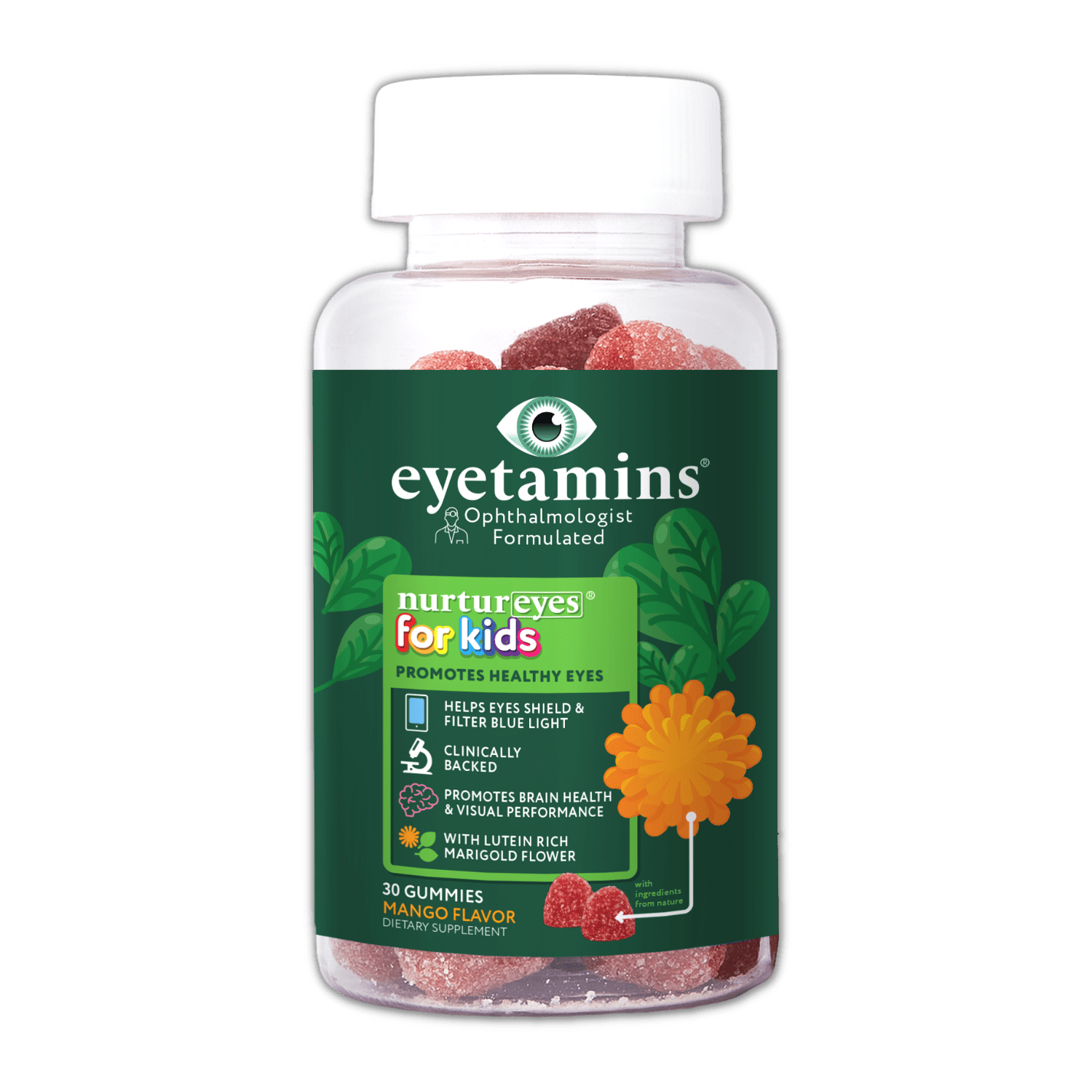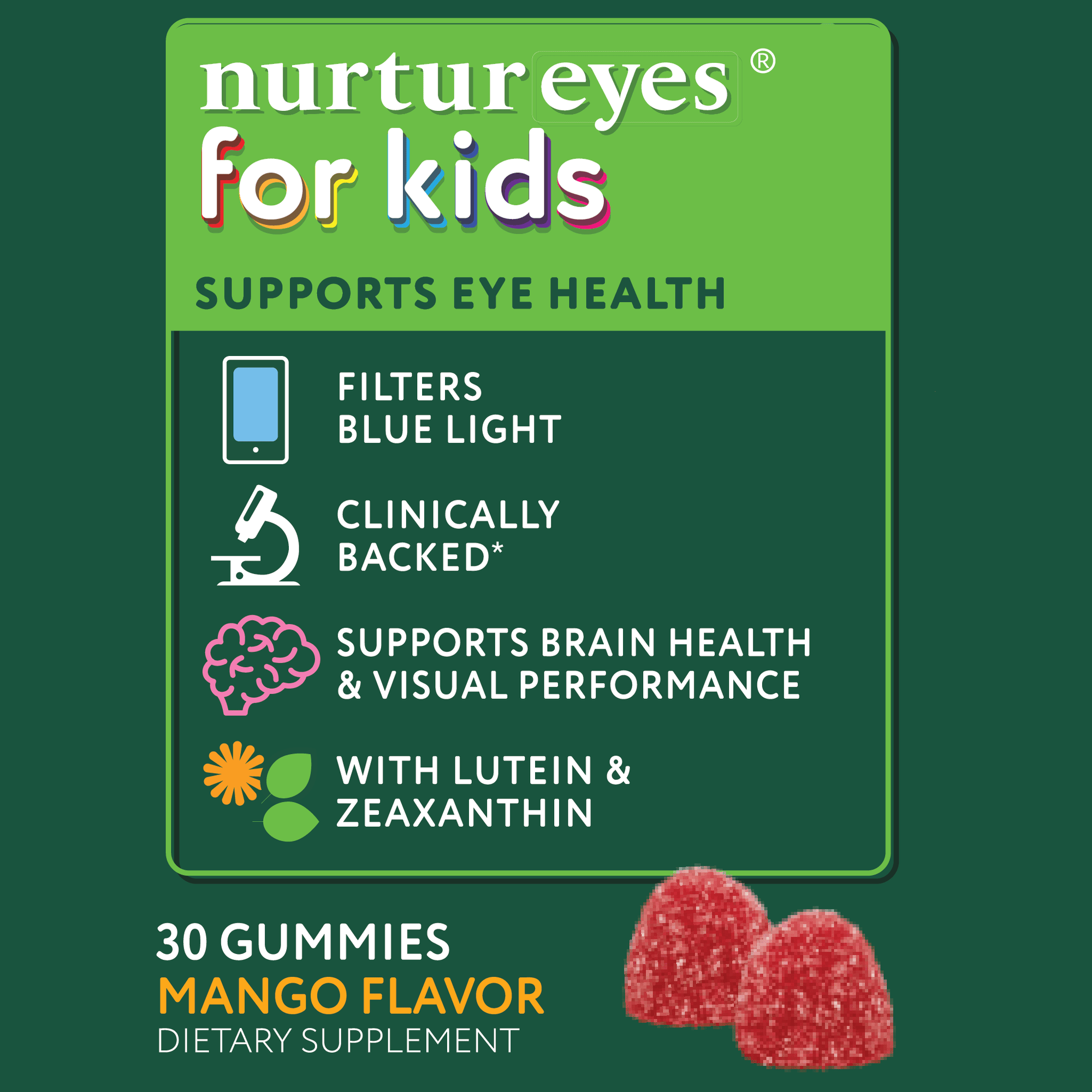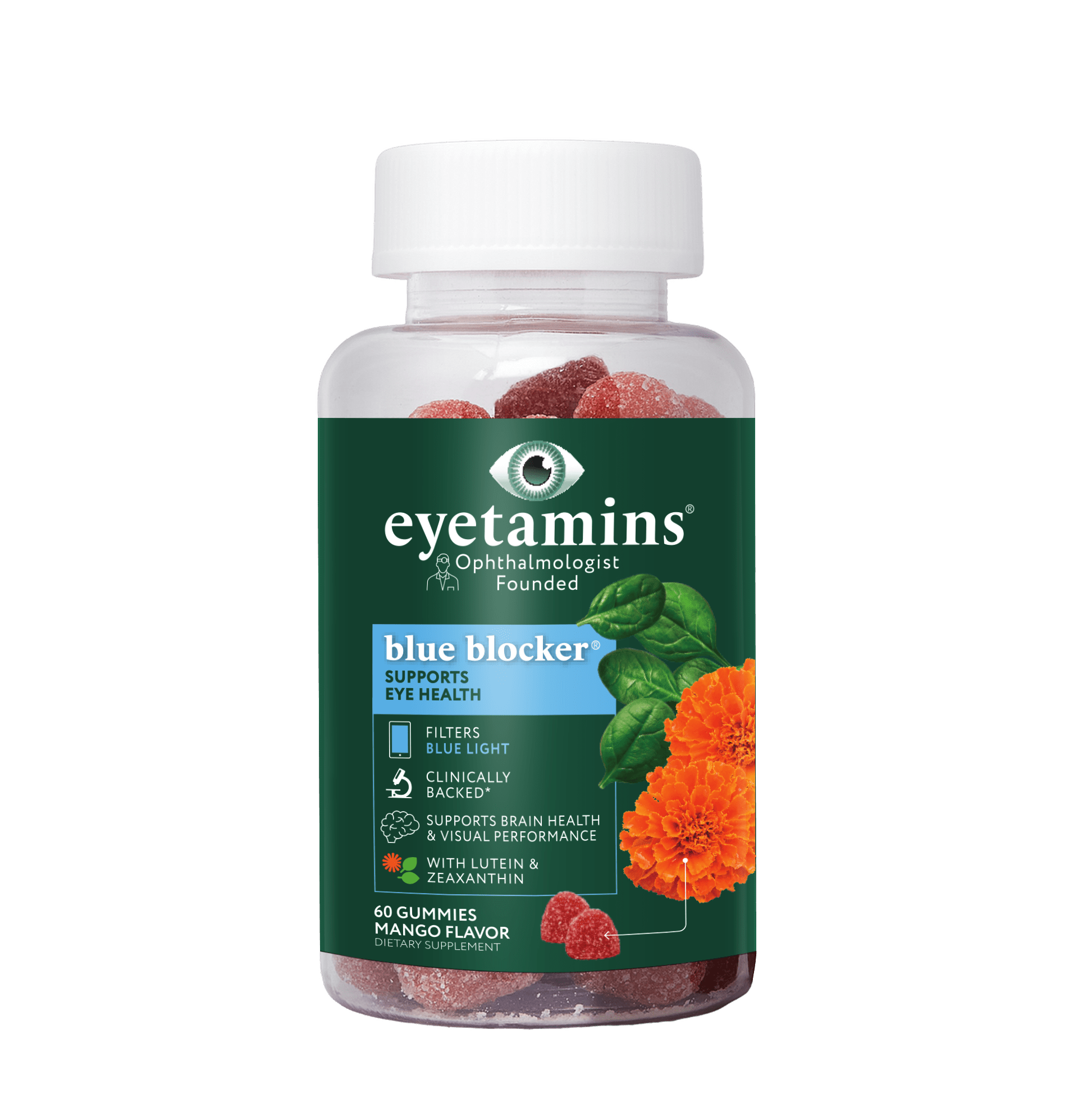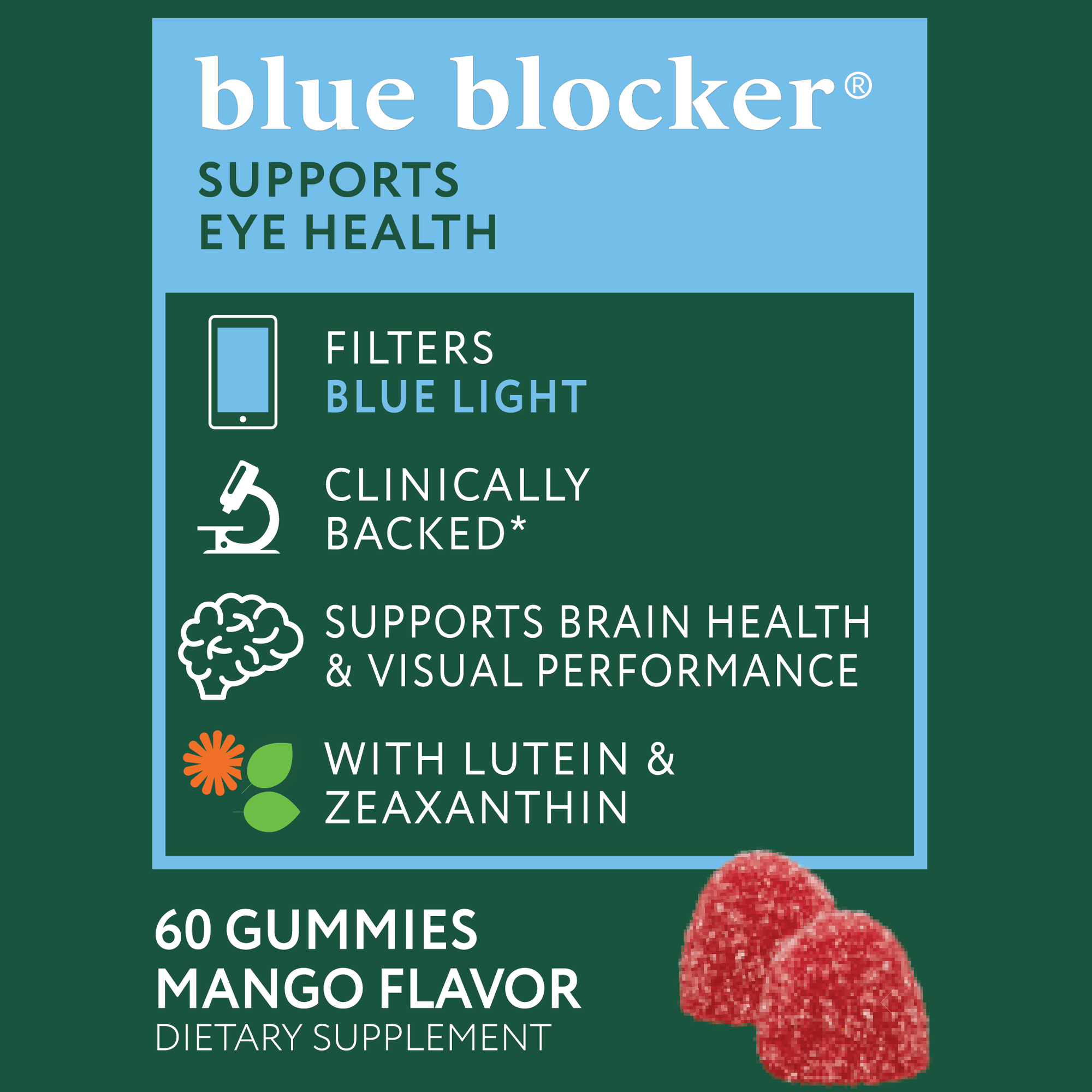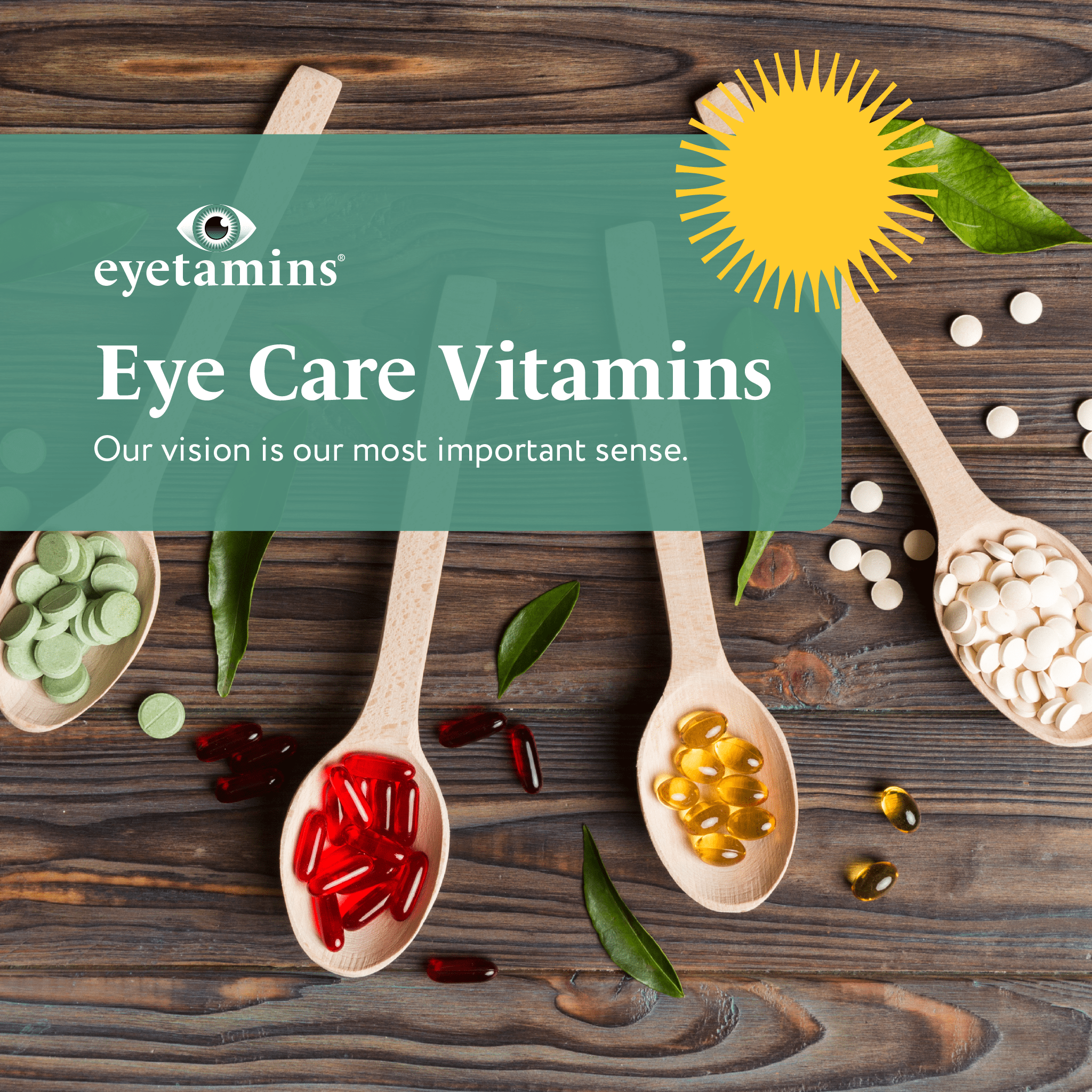· By Dr. Kaushal M. Kulkarni, M.D.
What Glaucoma Symptoms Mean
If you or your loved one are affected by an eye condition such as glaucoma, with high intraocular pressure (IOP), then this article is for you. High pressure can eventually lead to loss of vision, which can severely impact the quality of life of an individual. Therefore, the importance of catching this condition early is paramount. In this article, we will discuss what glaucoma is, the different types, risk factors, symptoms, and finally, some natural ingredients that can help reduce intraocular pressure and possibly prevent vision loss.
All About Glaucoma
This affliction is considered to be a collection of diseases that damage your optic nerve. Because it is hard to detect, it is often caught too late. The problem is, there are virtually no symptoms that would indicate a problem, until vision has already been lost. That is why getting a regular eye exam along with testing is the best thing you can do to catch it early.
Those who suffer from high intraocular pressure often feel nothing at all. In the early stages, most even have 20/20 vision. That is because the damage from high IOP affects your peripheral vision first, before you even begin to notice it. If it is not treated, the condition can progressively worsen your peripheral eyesight until you eventually develop tunnel vision. And if it gets worse from there, you could even eventually go blind. It is said that in many people, 70% of peripheral vision is often lost before the condition is even diagnosed. That is why getting your eyes regularly checked is so important, especially if you have a family history, or are above the age of 40.
If the condition is caught on time, however, there are treatments that can stop the disease. We will discuss these treatments below, but they usually consist of drops or surgery (laser or incisional). In this article, we will discuss all of those treatment options in detail. But first, let’s go over how the disease works, as well as different varieties. This will allow you to get a better idea of how your case can be treated.

How Glaucoma Works
This condition is brought on by damage to the optic nerve. Often this results from increased pressure of the clear fluid, known as aqueous humor, inside the eyeball. This fluid is secreted from the ciliary epithelium continuously, which is located inside the eye. The aqueous fluid fills the anterior chamber and provides nutrition to the cornea. Another function is to maintain the eyeball in a pressurized state. Then it drains through tiny holes called the trabecular meshwork, located in the anterior chamber angle behind the cornea.
If this trabecular meshwork becomes “clogged”, then the aqueous humor will not be able to drain freely, which can lead to an increase in intraocular pressure (IOP). This pressure is then transmitted to the back of the eyeball, and eventually causes damage to the optic nerve. As mentioned previously, this optic nerve damage affects peripheral vision first. One school of thought is that the nerve fibers actually get mechanically compressed from the high pressure.
Other factors involving blood flow to the optic nerve, as well as cerebrospinal fluid pressure, are also believed to play a role in balancing this system. Therefore, the damage from the increased pressure, the duration of it, as well as the amount of pressure and damage are not all perfectly correlated. That is why there are some people that can sustain very high pressure in the eye but very little damage, and some people actually have normal pressure and still get it (normal tension glaucoma). Therefore, the diagnosis of the condition is no longer determined simply based on whether the IOP is high or not. This a is very important point to understand.
To get a better understanding of the different types of this disease, we will go over each of them below. The various types have different risk factors, symptoms (if any), and danger levels. Being aware of where you are on this spectrum will help you determine what sort of treatment can help you.
Types of Glaucoma and Glaucoma Signs and Symptoms
- Ocular Hypertension: This is anyone that has a high IOP but has not yet had any damage to the optic nerve or peripheral vision. It is important that if you have any of the risk factors for this disease (listed below), that you get tested regularly. It may be helpful to begin drops, get laser surgery, or begin natural supplementation now to prevent worsening or progression of the condition.
- Glaucoma Suspects: Similar to ocular hypertension, this category includes people that do not necessarily have optic nerve damage, but the optic nerve may appear slightly glaucomatous or may have what is called “cupping” of the nerve. Again, if you are in this category, it is important to follow-up for regular exams with your doctor, as well as specific testing which will include an OCT (ocular coherence tomography) as well as a visual field test.
- Primary Open-Angle: This type is the most common form of the condition. It occurs when, for reasons that are not completely understood, an individual develops optic nerve damage, usually from high IOP. Often there are no symptoms and it may not be detected until peripheral vision is lost.
- Narrow Angle or Angle-Closure: This occurs when the iris blocks the drainage of aqueous humour in the anterior chamber angle. This is due to a narrow angle located between the cornea and iris which prevents the fluid from draining at a reasonable rate. In this case, you may experience a sudden reddening of the conjunctiva, accompanied by a headache and visual halos. You may even experience vomiting or nausea. Sometimes there is pain in the eye, which is more than your normal eye strain. This is considered an ocular emergency in which you should go straight to the emergency room and call your ophthalmologist.
- Low or Normal Tension: This type affects 15 to 25% of people with the disease. People with this type have a “normal” range of IOP but still experience progressive optic nerve damage and peripheral (or sometimes even central) vision loss. This may be caused by optic nerve cell sensitivity or blood circulation problems. Having a low or normal tension may indicate poor circulation. Not enough blood is reaching the optic nerve, causing it to become damaged. This variety is most common in Japan and Korea and affects men more than women. It also is associated with a higher age group, usually aged 60 or older.
- Secondary: This type occurs as a result of injury, inflammation, or as a drug side effect. Exfoliative glaucoma occurs due to lens deterioration when cell tissue flakes off and clogs the trabecular meshwork. Neovascular is common in patients with diabetes and involves new blood vessels forming on the iris and drainage canal, blocking the drainage of fluid. Pigmentary occurs when particles of pigment clog the meshwork and drainage channels. Traumatic glaucoma is open-angle and occurs due to ocular trauma. Uvetic is when the uvea becomes inflamed. Ghost cell happens to those who have had a vitreous hemorrhage.
- Congenital: Occurring within the first months after birth, this type is a result of the eye’s drainage system not being complete during prenatal development. This may be inherited, but it is possible to treat it surgically.
Risk Factors For Glaucoma
Now that we have some background of the disease, let’s look at what can increase your likelihood of getting it or making it worse. Knowing just what the risk factors are can help you possibly eliminate further harm or prevent it from happening altogether.
- Neurodegeneration: This condition is no longer seen as just a disease of the eyes, but also as a neurodegenerative disease. This is due to the progressive optic nerve degeneration and gradual loss of retinal ganglion cells. Researchers have observed that the specific areas of these optic nerves and retinal ganglion cells correlate with peripheral vision loss. In neurodegenerative diseases, age and family history play a part. Mostly, the adults that contract this disease are over 40. It is important to be aware if any of your family members have suffered from this condition. Those afflicted with Alzheimer’s also have a greater risk of developing the condition.
- Oxidative stress: Another risk factor is increased oxidative stress. This occurs when there is an imbalance of free radicals and antioxidants in the body. Damage to the tissue layers that regulate the production or drainage of aqueous fluid, as well as damage to the neurons and optic nerve have all been linked to oxidative stress. That is why adding antioxidative nutrients, which we will discuss soon, can be helpful in the treatment of this disease. Factors that can contribute to a higher level of oxidative stress include obesity, smoking, alcohol consumption, poor diet, and pollution.
- Inadequate blood flow: This occurs when there is a blood vessel dysfunction throughout the body, or there is a problem with blood flow to the optic disc. This can cause progression of the disease. An example of this may be obstructive sleep apnea, or systemic hypotension
- Certain medications: Some drugs can increase your chances of developing the condition if you already have a narrow angle. Some of them include anticholinergics. Check with your doctor to make sure none of the medications you are taking could put you at risk of the disease.
- Diseases like hypertension and sickle-cell anemia
- Blacks, Asians, and Hispanics all have higher risk factors for the condition.
- Gene Mutations: In 2009, it was discovered that the simultaneous mutations of the genes WDR36 and STI1 could cause this disease.
- Retinal vein occlusion: This occurs when there is a blood clot blocking the retinal vein. The blockage is called an occlusion or stroke and can lead to neovascularization of the iris or anterior chamber angle, leading to high IOP.
- Mitochondrial dysfunction: A defect in the mitochondrial complex can cause a deterioration of the trabecular meshwork. Antioxidants and mitochondrial permeability transition inhibitors (MPT) can reduce degeneration.

Glaucoma Eye Drops
Unfortunately, once it occurs, the damage caused by high eye pressure is usually irreversible. However, it is possible to slow or prevent vision loss through treatment and regular visits with your ophthalmologist. Catching the disease in the early stages is imperative for this to happen.
One of the main targets of treatment is the lowering of the IOP. This can be done through prescription drops, oral medications, laser treatment, or surgery. Results from these treatments again depend upon the severity of the case.
In addition, there are some people that prefer to add a holistic approach to their drop or medication regimen. Alongside a healthy diet and exercise, there are several natural supplements that are emerging in the treatment of high IOP. Emerging clinical research has shown that there are a very specific set of natural ingredients that have been shown to have the potential to lower and stabilize intraocular pressure. We will discuss these ingredients below.
What Vitamins Help Eye Pressure?

- Forskolin: Forskolin is found in the roots of the Indian Coleus plant (Coleus forskohlii), which is related to mint. This plant has been used in traditional herbal medicine for centuries. And these days, scientists are showing new results to back it up. Forskolin has been known to treat conditions like heart disease, asthma, bronchitis, and constipation. It is said to increase bone mineral density, which lowers the risk of osteoporosis. It is also said to stimulate testosterone formation and thereby promoting the maintenance of muscle mass. Researchers have also found that forskolin can help lower IOP, supporting the health of the retinal nerve ganglions and optic nerve. It has also been combined with Rutin in several studies, indicating impressive results.
- Rutin: Rutin is a plant pigment, also known as a flavonoid, which can be found in some fruits and vegetables. Some of the major sources of rutin for medicinal purposes include buckwheat, Japanese pagoda tree, and Eucalyptus. You can also find rutin in lime tree flowers, elderflowers, hawthorn, rue, St. John’s Wort, Ginkgo, apples, and more. Common uses for rutin include swelling in the arms or legs due to lymphedema and osteoarthritis. It is said that rutin might have antioxidant and anti-inflammatory effects. The chemicals that produce these effects could protect against cancer and other diseases.

- French Maritime Pine Bark Extract: Maritime pine bark extract comes from the bark of the French maritime pine tree. Pine bark extract is rich in bioflavonoids which has both anti-inflammatory and antioxidant effects. It may also help bring some improvement to osteoarthritis and skin disorders. The combination of pine bark and bilberries has been found to prevent the condition by lowering IOP and improving ocular blood flow. Maritime pine bark itself helps improve endothelial function.
- Bilberry: Bilberries, sometimes known as European blueberries, inhabit the Eurasian region. The shrub produces edible, dark blue berries. They differ from the North American blueberries but are closely related. The fruit can be used dried or ripe, along with the leaves, to be used for varying medicines. Bilberry can be used to treat poor circulation which causes swelling of the legs. The flavonoids in the leaves are said to improve circulation in people with diabetes. It has also been used for high blood pressure, gout, urinary tract infections (UTIs), sore throat, diarrhea, among other conditions. Bilberry has also been used to treat disorders of the retina, cataracts, and nearsightedness. In high eye pressure, it is said to counteract the hyperpermeability of ciliary capillaries.
- Black Currant Extract: Black currant, or cassis, though known to flavor liqueurs, jams, and ice cream, it also has valuable health benefits. This woody shrub produces berries, seed oil, leaves, and flowers that are used to make medicine. Black currant comes from parts of central and northern Europe, as well as northern Asia. The seed oil can be used for high cholesterol. The oil contains a chemical called gamma-linolenic acid (GLA). GLA is said to improve the immune system, as well as decrease swelling. Black currant is also said to have antioxidant effects, with the ability to prevent wrinkles. In the case of eye pressure, the black currants can provide a significant boost of blood flow to the optic nerve, which can significantly halt the progression of the disease.
Understanding these signs and symptoms will allow you to better navigate your journey to eye health. Although focusing on intraocular pressure is not the only factor that will prevent the worsening of the condition, it should be one of the primary focuses. Lowering intraocular pressure is one of the main targets of prevention and treatment programs.
At eyetamins, we have developed a doctor-formulated supplements to support your vision and eye health in today's world.


